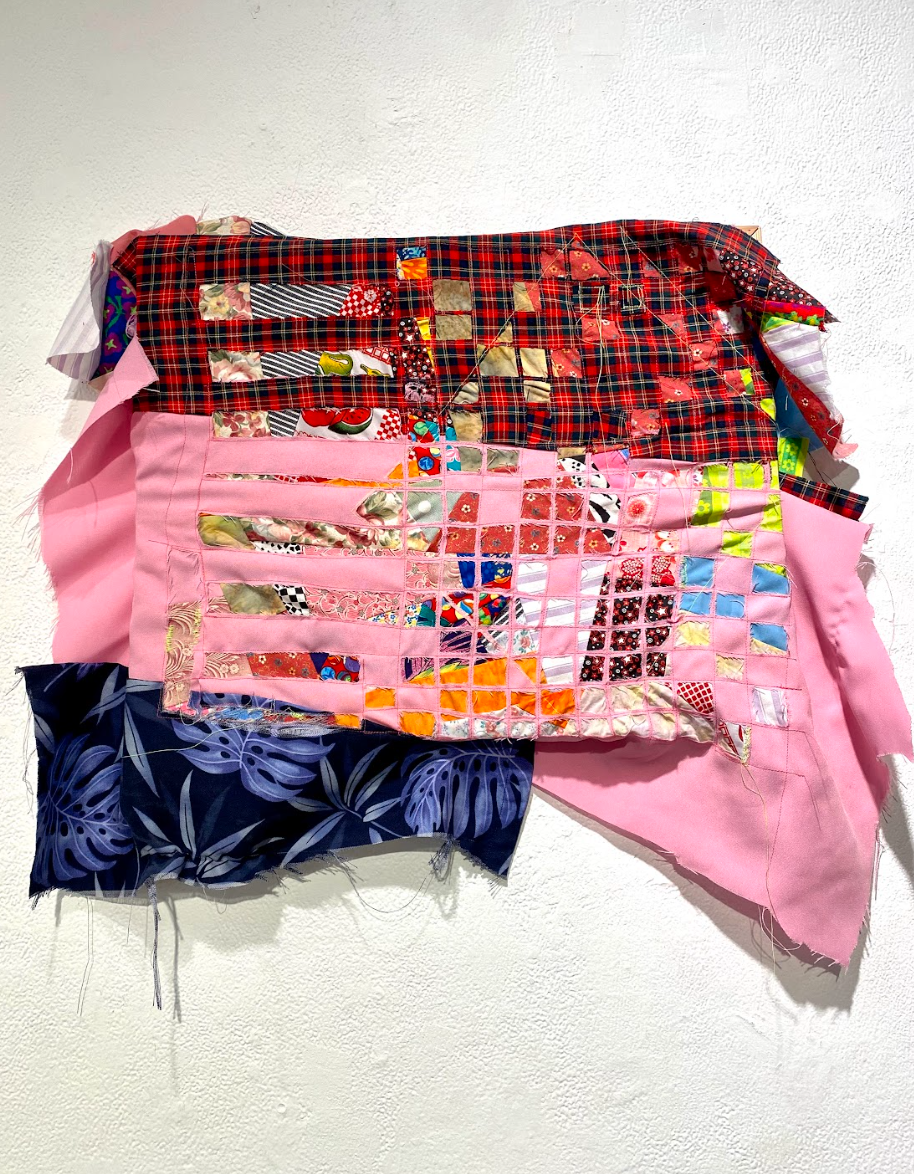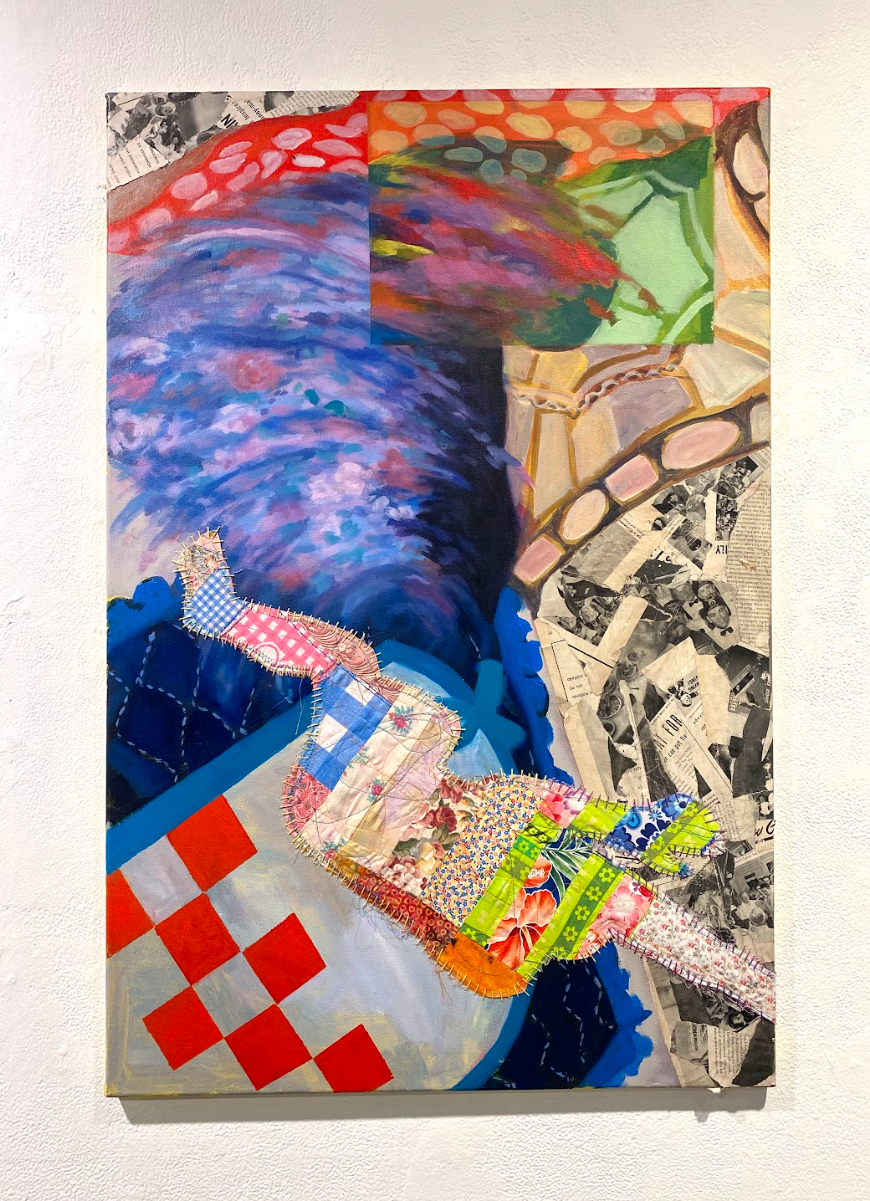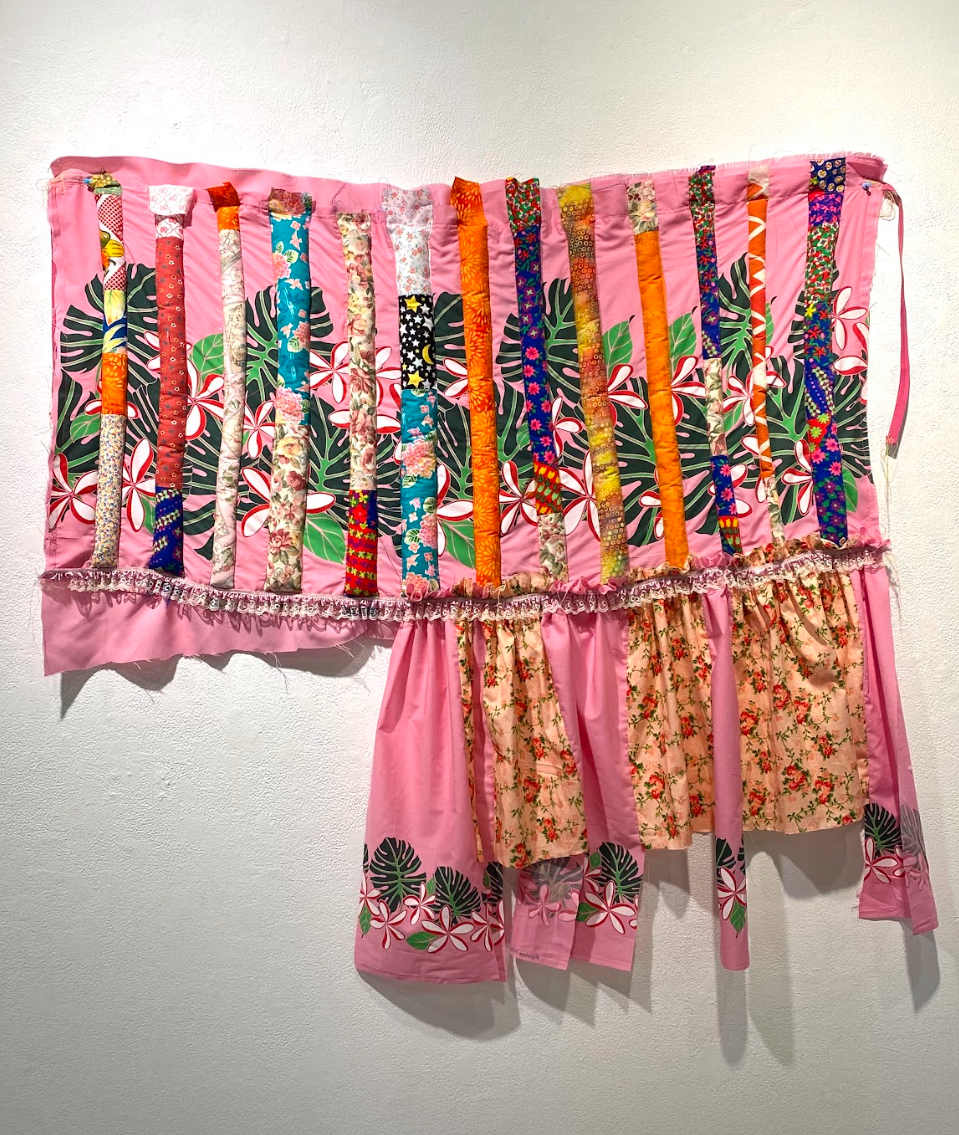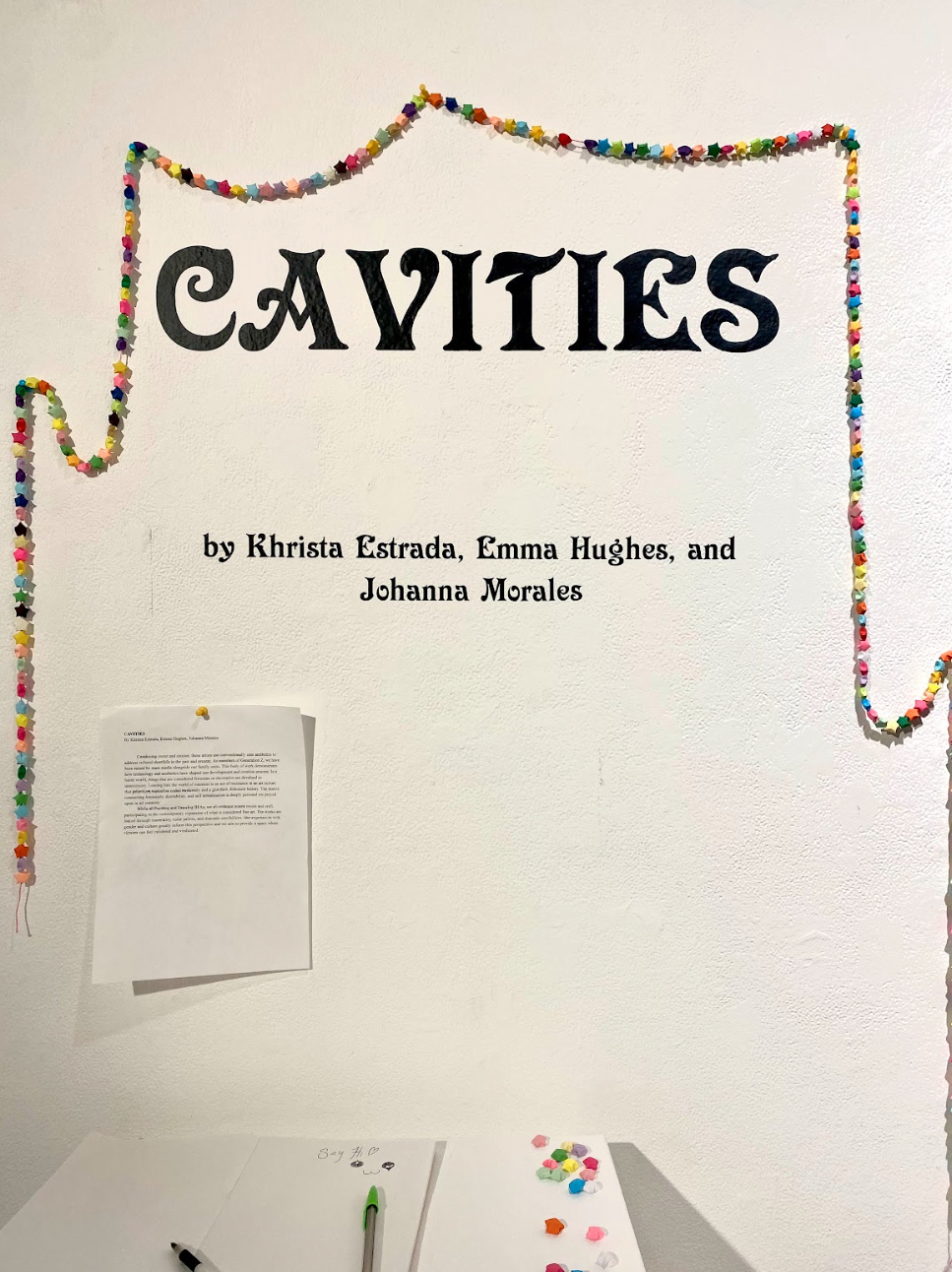Culture and Identity: The Art of Emma Hughes
Among the pinks, pastels, and bright patterns of patchwork fabric in her art pieces, Emma Hughes’ portrait is the most eye-catching.
In a confined space, she sits on the floor in her pink slip dress with a gutted fish right in front of her. Blood saturates her tongue and drips down to her wet, clawed hand. Her expression is rabid, her eyes wild.
It almost feels like the canvas is too small to contain her.
The piece is called The Animal I Have Become (Savage Paradigm) and it was one of the first art pieces that was displayed in the group art show, Cavities.
Emma Hughes’ self portrait, The Animal I Have Become (Savage Paradigm), hanging in Marylin Werby Gallery. Photo by Nancy Morales.
The show was held in Marylin Werby Gallery at CSULB. It featured three student artists: Emma Hughes, Khrista Estrada, and Johanna Morales. The three artists curated, arranged, and organized the art show together.
In her art pieces, Hughes wanted to create something that paid tribute to her familial ties in Hawai’i. “I've really been trying to research and explore how to represent [culture] and how that has impacted my like maximalist, crazy vision…,” she says.
Hughes’ introspective look of culture and identity has inspired components in her art.
“I’ve been really interested in exploring my cultural identity and how that relates to gender and all my experiences… there's a lot of motifs and visual aspects that even before I was really consciously putting in my art,” Hughes says.
Such is evident in her fabric art piece, Perpetual Righteousness.
In a post on Instagram, Hughes has the art piece displayed with a caption that reads, “integrating Hawaiian quilting motifs makes me think about the complicated history of the art form and how it reflects the relationship that many indigenous people have been conditioned to interact with their culture and environment.”
It’s evident that identity plays a crucial factor in the art among all three artists. “We're trying to go deeper and understand where these aesthetic interests are coming from, and where in our life, and [in] our family history, we've grown attached to these things. Hopefully, you can see that,” Hughes says.
Cavaties, the group art show held by Khrista Estrada, Emma Hughes and Johanna Morales, show cased all three artists’ pieces.
The placement of the art pieces from all three artists are mixed together. There isn’t a label in sight. Hughes says that it was intentional. In observing each piece from one end of the room to the other, the show is unified by a soft color palette and curious details.
Currently, Hughes is focused on incorporating fabric into her artworks. In an art piece, different patterns of fabric live cohesively on the canvas. In a patchwork pattern, different pieces of fabric fit together in angular shapes, making the whole set look like a completed puzzle.
The act of joining several different and mismatched ideas is an essential theme to Hughes’ artistry.
This theme lends itself to Hughes’ perception of the kind of pieces being produced by Gen-Z artists: “Growing up with the internet generation and [seeing] how that visually impacts people is really interesting. I think maximalism and having an abundance of information is a major theme that I see because we've kind of been bombarded with information our entire life…I think our understanding of social issues is really specific to how we grew up and how we watched things happen in our life…” she says.



Such is evident in her portrait. Hughes’ idea was to demonstrate “the ethics of violence in art, the portrayal of Pacific Islander people in Western culture, and general disillusionment with an empty landscape of consumption.”
Hughes’ maximalist style and colorful palette has developed over the years. Her initial inspirations, Pee-wee’s Playhouse and the fashion in Project Runway, have lent a visual appeal for a colorful and playful style for Hughes.
Her focus and style as an artist have honed since studying at CSULB. “Education in general has really helped me with environments and understanding setting,” Hughes says. The challenge of configuring a subject and the setting is evident in a lot of beginning artists, says Hughes.
In pursuing art education, Hughes has been able to study this skill, “finding ways to incorporate that environment can be really impactful to your concept and I feel like I've really been able to understand that more,” she says.
In relation to Hughes’ style, the use of fabric is an essential component to her artwork. “I love to sow, and I think it's a big part of my artistic vision,” Hughes says. In working with fabric, Hughes’ interest lies in “making something look interesting opposed to something functional.”
Hughes considers how quilting and the “grandma aesthetic” has been influential in her work. “[The two other artists and I] grew up very close to our grandmas and I think that says a lot about our aesthetic influences.”
Hughes’ artistry is multifaceted and complex. From the maximalist style of color and pattern to the heavy influences of social issues and cultural identity, her artwork showcases the aesthetics and themes unique to her.


